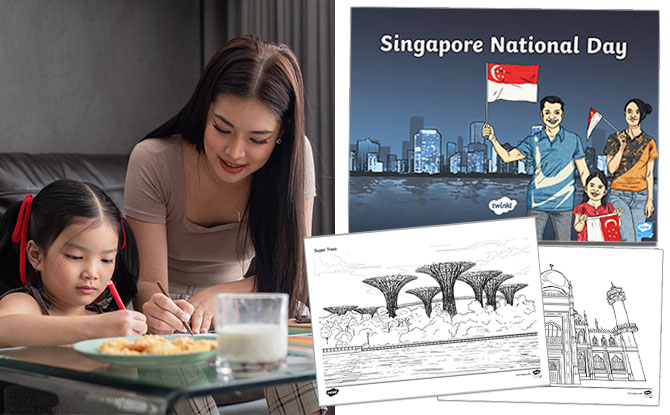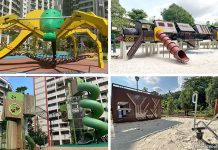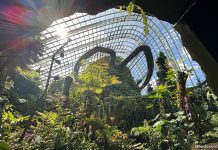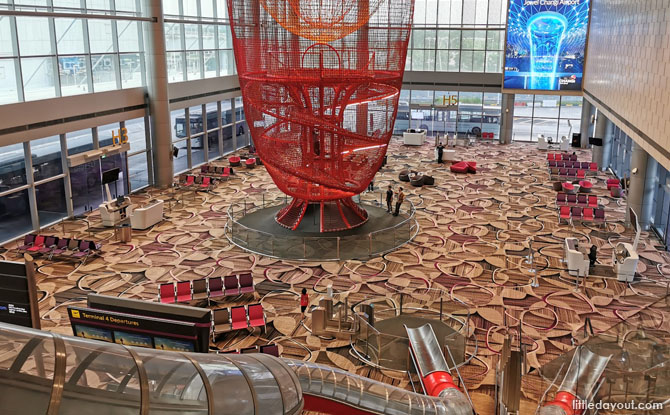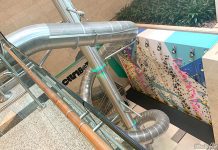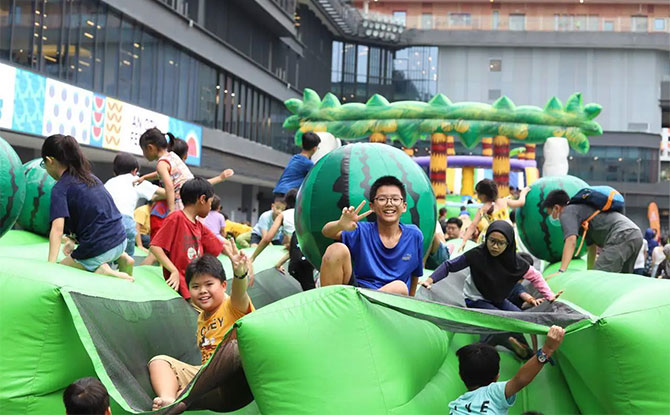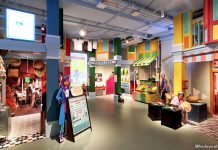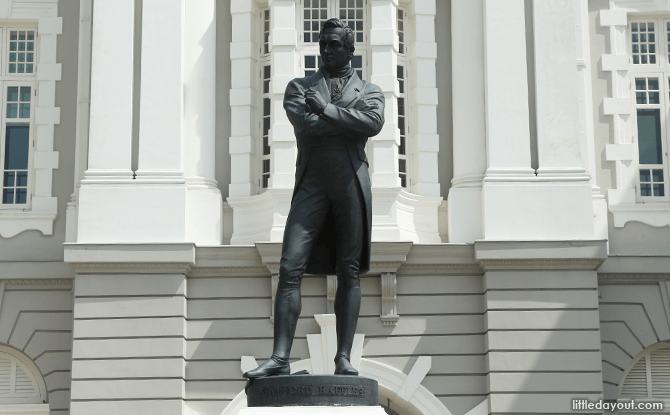
The Civic District is the historic heart of Singapore. It was here that Raffles first landed on Singapore’s shores. The buildings and monuments found here have borne witness to momentous times in Singapore’s history – from the island’s days as a Straits Settlement to becoming a Crown Colony and to Nationhood.
We look at some of the hidden stories behind the various buildings and monuments found around Singapore’s Civic District.
Raffles Statue – A Foot On The Region
Along the Northern bank of the Singapore River is a white-coloured statue of Raffles. Placed on a pedestal and with arms folded, it marks the spot where it is believed that Raffles first set foot onto Singapore shores in 1819.
This white statue is actually a 1970s copy of the original bronze statue that was created by British sculptor Thomas Woolner and unveiled in 1887 at the Padang.
BE PSLE-READY: Join Expert Educators for Revision Boosters to Empower P6 Students
BURP: Join the Sound Collector on a Whimsical Chase at Esplanade – Theatres on the Bay
WEEKEND IDEAS: Get Inspirational Ideas of Things to Do
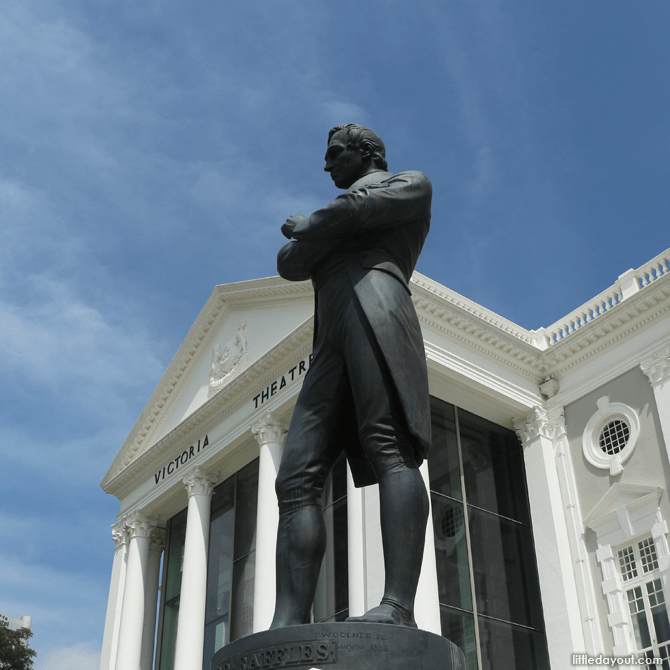 In 1919, the centenary of Raffles’ landing in Singapore, the bronze sculpture was relocated from the Padang to Empress Place in front of the Victoria Memorial Hall. It was felt by the authorities that this would be a more dignified spot for a memorial to the founder of Modern Singapore. Previously, at the Padang, the statues was often struck by footballs from the field and even used as a seating spot by spectators.
In 1919, the centenary of Raffles’ landing in Singapore, the bronze sculpture was relocated from the Padang to Empress Place in front of the Victoria Memorial Hall. It was felt by the authorities that this would be a more dignified spot for a memorial to the founder of Modern Singapore. Previously, at the Padang, the statues was often struck by footballs from the field and even used as a seating spot by spectators.
During World War 2, the bronze Raffles statue had a near-miss from a bomb and was removed during the Occupation years. It was re-instated in July 1946 and continues to stand in front of the Victoria Theatre and Concert Hall.
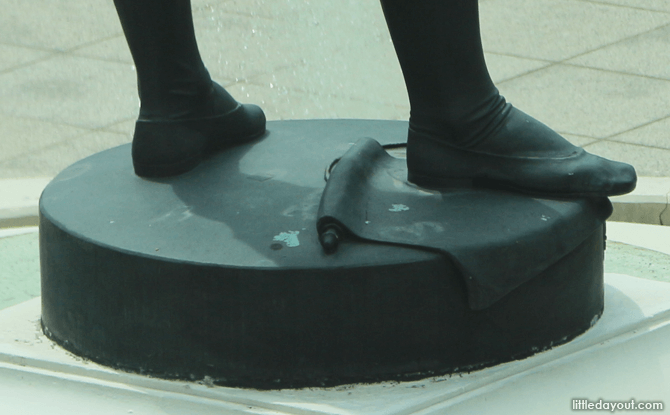 A little known fact is that in the statue, Raffles is standing on a map of the area around the Straits of Malacca. This was the sculptor’s way of acknowledging Raffles’ landing in British Malaya.
A little known fact is that in the statue, Raffles is standing on a map of the area around the Straits of Malacca. This was the sculptor’s way of acknowledging Raffles’ landing in British Malaya.
Incidentally, the Raffles statue’s sculptor, Thomas Woolner, is buried a few yards away from Raffles’ own final resting place in London at St. Mary’s churchyard in Hendon.
Elephant Statue – Gift from a King
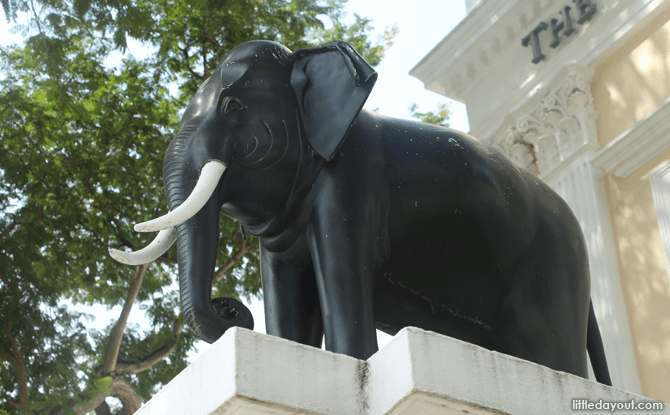 Another monument found around the Civic District is a bronze Elephant statue. It stands next to The Arts House, a spot it was relocated from the front of the Victoria Memorial Hall when it had to make way for the bronze Raffles statue.
Another monument found around the Civic District is a bronze Elephant statue. It stands next to The Arts House, a spot it was relocated from the front of the Victoria Memorial Hall when it had to make way for the bronze Raffles statue.
Made in Bangkok, the Elephant Statue was a gift from King Chulalongkorn the king of Siam who visited Singapore in March 1871. This was the first time a Siamese monarch had visited a foreign country. During his visit, King Chulalongkorn stayed at Government House, now the Istana.
At the base of the statue reads the inscription, “His Majesty Somdetch Paramindr Maha Chulalongkorn, the Supreme King of Siam, landed at Singapore, the first foreign land visited by a Siamese Monarch, on the 16th March 1871″.
King Chulalongkorn’s father was King Mongkut of Siam. King Chulalongkorn was himself taught by governess Anna Leonowens whose memoirs were turned into the Rodgers and Hammerstein musical, The King and I.
Former Empress Place Building, now Asian Civilisations Museum – The Centre of Singapore
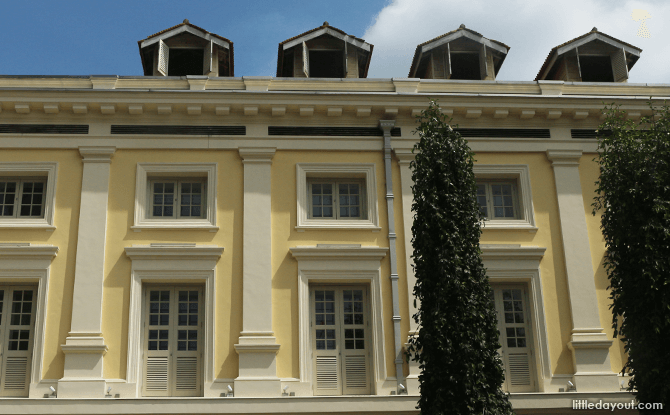 Today, the Asian Civilisations Museum displays museum pieces that trace Singapore’s immigrant roots.
Today, the Asian Civilisations Museum displays museum pieces that trace Singapore’s immigrant roots.
In its past, it was a place where people with real immigration issues flocked to.
Formerly known as the Empress Place Building, the building was the location for the Immigration Office. It also housed the Registry of Births and Deaths, the Citizenship Registry and the National Registration Department.
Earlier in its history, the building was home to the Colonial Secretariat, Attorney General’s Chambers, the Treasury and the Land Office.
The building was commonly known as Government Office and was completed in 1867, making it one of the oldest buildings in the Civic District.
A little-known fact is that the current Asian Civilisations Museum is the second attempt at having a museum housed in the building. The first, called the Empress Place Museum, opened in 1989 and closed in 1995 after failing to draw enough visitors.
After a revamp, the current Asian Civilisations Museum opened in 2003.
The building also used to be the Geographical Origin of Coordinates of Singapore. This was the point used for triangulation of coordinates for the rest of Singapore.
The origin of coordinates for Singapore was at the Empress Place Building’s the flagstaff and had a median reference of 1°17’15.528″N and 103°51’10.808″E.
The flagstaff used to be located close to where is the ACM’s current Tang Shipwreck gallery is and has since been removed.
Dalhousie Obelisk – Homage to the Boss
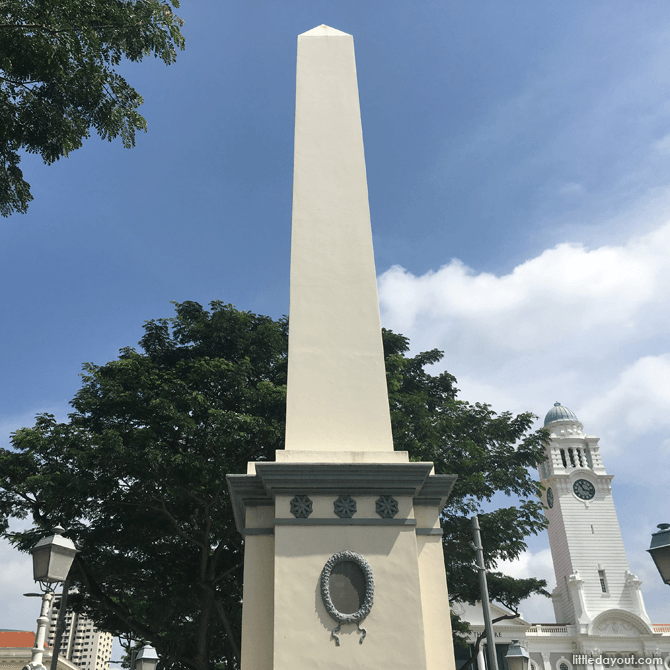 Standing in the middle of the Civic District’s Empress Place is a needle-like monument known as the Dalhousie Obelisk.
Standing in the middle of the Civic District’s Empress Place is a needle-like monument known as the Dalhousie Obelisk.
This was the first public monument ever erected in Singapore. It was put up in 1851 to commemorate the visit of the Marquis of Dalhousie, James Andrew Broun-Ramsay, the governor-general of India to Singapore a year earlier.
The visit was an important one. The boss was coming to town.
During an earlier visit by the previous governor-general in 1829, the aftermath was that the Straits Settlement (which included Singapore) was downgraded from a presidency to a residency as part of cost-cutting measures.
As a presidency set up by the British East India Company, Singapore, together with Malacca and Penang were previously administered with its capital in Penang. As a residency, it came under the presidency of Bengal and all governing decisions were made in Calcutta.
Thankfully, the visit in 1850 went much better.
The expatriate and local merchant community rolled out the red carpet and took pains to showcase the economic potential of Singapore. It went so well that the governor of the Straits Settlement even got a raise after the visit!
It was in this context that the Dalhousie Obelisk was raised in 1951 at the Civic District.
A little-known fact about the Dalhousie Obelisk is that even though it looks like a single stone column, it is made from bricks and mortar. It is plastered overlook like a single monolith.
The Arts House (Old Parliament House) – Built by Mistake in the Civic District
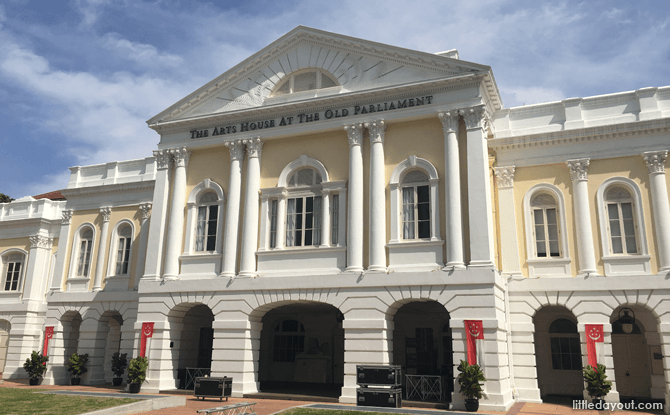 The Arts House is one of the oldest buildings found in the Civic District.
The Arts House is one of the oldest buildings found in the Civic District.
It was built in 1827 by mistake.
Under the 1822 Raffles Town Plan, the area where the Civic District is located was intended for government use. Somehow, someone had sold a plot of land to Scottish merchant John Argyle Maxwell.
By the time the “honest mistake” was discovered in April 1827, a residential house had already been built on the site – a site where Temenggong Abdul Rahman, the local chief who had made the initial deal with Raffles, had once lived.
What did Maxwell do? Like a savvy businessman, he rented the building back to the government – a reverse buy-and-leaseback arrangement of sorts.
It was then used as a courthouse, served as the Supreme Court, and eventually becoming the Legislative Assembly House, and the Parliament House when Singapore became self-governing.
Today, the building which started off as a mistake is an events venue known as The Arts House.
Victoria Theatre and Concert Hall – Twins, 40 Years Apart
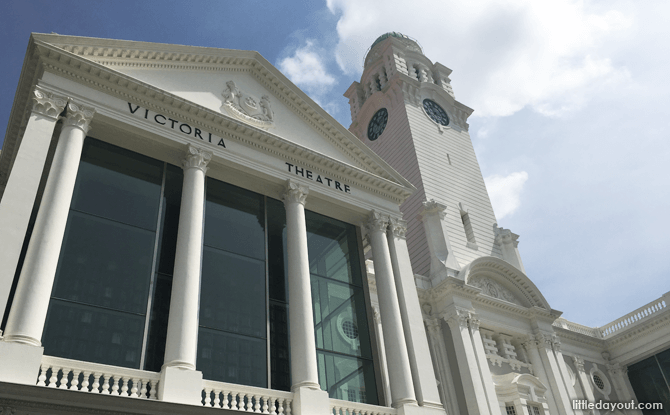 Looking at the Victoria Theatre and Concert Hall, it would appear to be a single building with a clock tower and two wings. However, in reality, it consists of two separate buildings built 40 years apart.
Looking at the Victoria Theatre and Concert Hall, it would appear to be a single building with a clock tower and two wings. However, in reality, it consists of two separate buildings built 40 years apart.
Victoria Theatre, on the left side of the building, was originally Singapore’s Town Hall. It was completed in 1862 and even housed the Singapore Library.
The right side of the building was built between 1903 and 1905 after the death of Queen Victoria in 1901. Named the Victoria Memorial Hall, it was conjoined with its 40 years older “twin” via a new 54-metre tall clock tower.
This “trick” of merging two buildings to create a new one would be repeated again in 2015 just a few steps away.
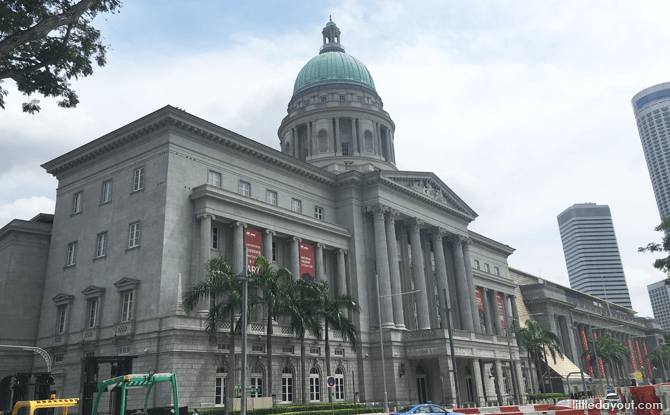 The National Gallery Singapore, another significant building in the Civic District, is made up of the former Supreme Court building and City Hall building connected together into a single building by a new extension. History repeats itself it seems.
The National Gallery Singapore, another significant building in the Civic District, is made up of the former Supreme Court building and City Hall building connected together into a single building by a new extension. History repeats itself it seems.




